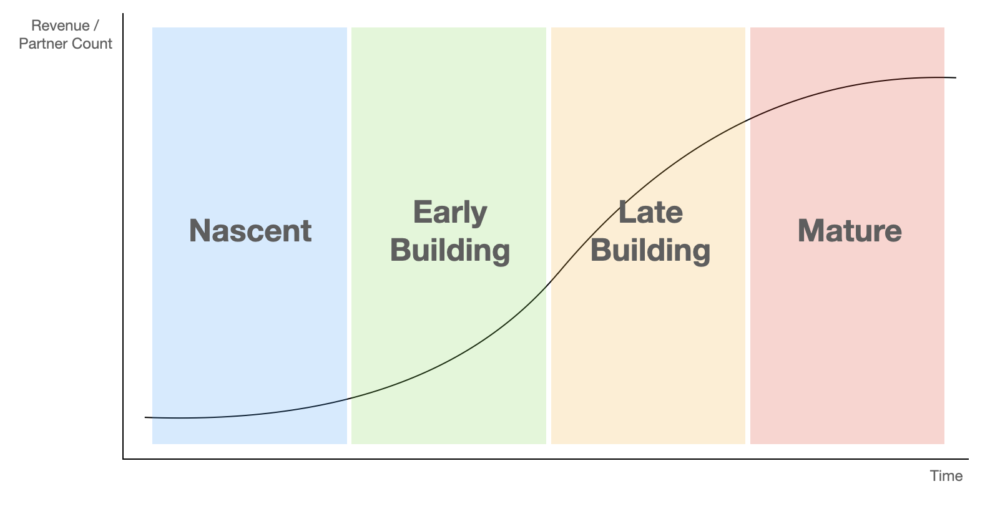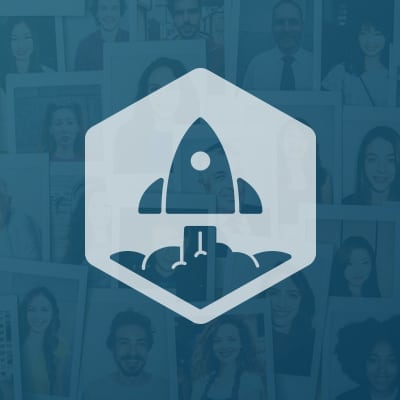So you wanna build a channel sales program: Don’t Copy HubSpot!
I could have also written, “Don’t copy Salesforce, Xero, or Autodesk.” All these companies are great companies with great channel sales programs.
But your idolization doesn’t mean you should copy them.
Any channel sales program goes through an evolution. And it’s paramount that you understand where you are in this evolution.
There are four stages:
- Nascent – you mean you want me to dance with him?
- Early Building – ok, so my hands go where?
- Late Building – yup, I got rhythm.
- Mature – honky tonk or tango? I can do it all.

There are many reasons to start a channel sales program. None of them include change, evolution, or adaptation.
Yet, a successful partner program will be constantly adapting as your company and your partners grow.
Everything is harder with a channel sales program. Training a direct sales team on a new product launch is like teaching someone the macarena. Simple. Straightforward.
Asking your channel to sell a new product is like teaching someone to be a ballerina. Complex. Multi-faceted.
Nascent partner programs’ chief concern is how to attract as many partners as possible. In many cases, each partner is both new revenue when they purchase your product and potential new revenue when they sell your product.
Early Building partner programs’ are focused on partner acquisition and reselling.
Late Building partner programs tend to focus on reselling and retention.
Mature partner programs have built a steady sales pipeline and focus mostly and servicing existing customers.
There are a number of reasons why distinct epochs exist: customer growth, diminishing returns with each new partner, increased competition between partners, product complexity, and brand awareness.
So what should you be focused on?
Culture, Incentives, and Support.
Culture
“Culture eats strategy for breakfast.” — Peter Drucker
The most successful partner programs indoctrinate their partners with their culture. You have a perspective on how business is done. Your partners will look to you and learn how to impress your mutual customer from watching you. Your company becomes a role model for how to do business both from a tactical perspective but also from an attitude perspective. Your culture is the key. The first step is to interact with your partners similarly to how you interact with your employees. Your partners will feel it and you’ll build an army of loyal representatives. Customers will be bombarded with your brand and your culture even when you’re not in the room.
Incentives
“Show me the incentive and I will show you the outcome.” — Charlie Munger
Let’s get one bit of trouble out of the way: you are going to make a lot of mistakes creating incentive programs for your partners. What’s most important is that you match your incentives to your unique business needs and the stage of your partner program (nascent to mature). In order to avoid making changes in the future, keep it simple and create tiers that partners can attain through better performance.
At HubSpot, partners were originally paid only commission for every sale they made. Over time, we added Partner Tiers based not just on sales, but customer retention and performance certifications. Other companies like Intuit focus their partner program more on customer service than sales. Again, it depends on the maturity of your business and your unique business goals.
Support
The single biggest mistake I see companies make is that they underinvest in partner support. Mark Roberge, author of The Sales Acceleration Formula and HubSpot’s former CRO, outlines four key jobs of a sales leader:
- A sales recruitment system that attracts and retains the very best talent
- A consistent onboarding system that predictably creates early sales rep success
- A consistent sales playbook for sales reps to win customers
- A lead generation system that consistently provides sales reps with leads
The best partners programs do these same four things for their partner program.
- The sales recruitment system is your sales process to attract new partners
- Your sales rep onboarding is your partner onboarding process. This is somewhere in between a customer onboarding and employee onboarding system.
- Your partner sales playbook teaches your partners how to sell like you do and how to grow their business profitably.
- Your lead generation system teaches your partners how to find their own business and what they can expect from you in terms of leads
The key is to find the best solutions to impact your partners and your shared customers’ outcomes. In the case of HubSpot, we assigned every partner two contacts at HubSpot, provided them unlimited free Technical Support, and partner-specific group trainings.
Build Connection
Ultimately, relationships matter. Building connection between your company, your people, and your partners will drive your success.
The more transparent you can be with your partners the more you will win. Treat your partners like employees and don’t fear sharing information. When you hold back, you end up surprising your partners and you delay your success.
Instead, find ways to communicate often and early. At HubSpot, we selected small groups of partners dispersed regionally to test ideas, get feedback, and send them a heads-up before we made changes. Yes, we asked them to keep things confidential and I can’t remember a time we got burnt. The Partners appreciated the rare amount of information we gave them ahead of time and they repaid us many times over with loyalty, discretion, and sales.
What more can you ask of your partners?
David Shepherd spent 10 years in Sales at Hubspot, including one year as VP of Channel Sales.


